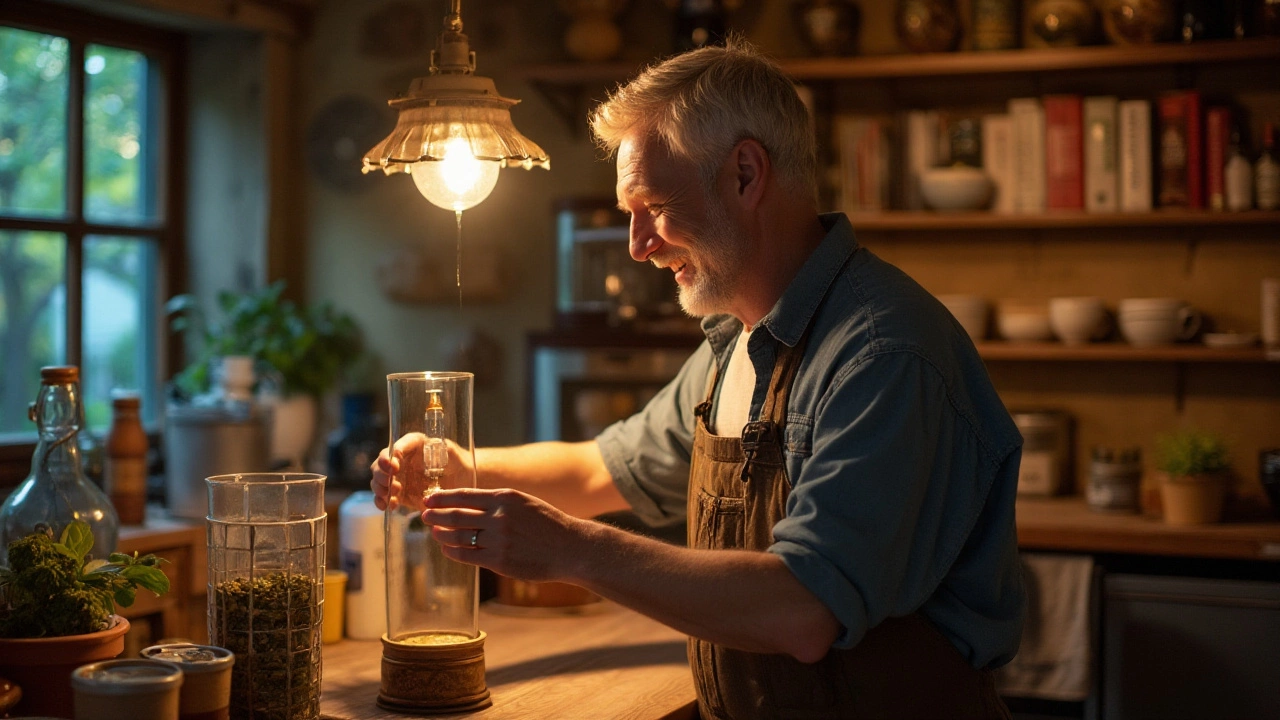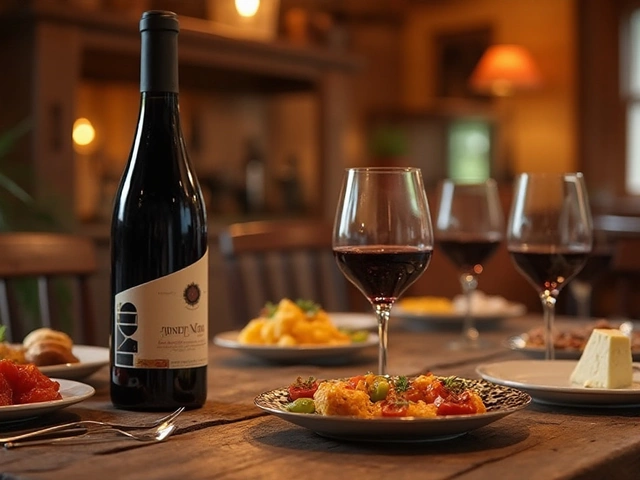For many enthusiasts, crafting beer at home is a labor of love filled with bubbling fermenters and the anticipation of tasting that first sip. Yet, a common question arises: how soon can you drink your home brew beer? In pursuit of that perfect pint, patience is just as crucial as the ingredients you choose.
Understanding the brewing timeline involves more than just waiting. It requires knowing each step in the process and how it impacts the final product. From fermentation to bottling, each stage influences the flavor and quality of your beer. The charm of home brewing lies in this combination of science and art, where the timing of your taste test can make all the difference. Let's unravel the timeline to ensure your experience is as rewarding as possible.
- The Brewing Process and Timeline
- Understanding Fermentation Stages
- Factors Affecting Flavor Maturation
- Tips for Enjoying Your First Sip
The Brewing Process and Timeline
Delving into the world of home brewing is like embarking on a fascinating journey where each step plays a vital role in the quest for crafting a delightful pint of beer. The process begins with selecting your ingredients—water, malt, hops, and yeast. These components may seem simple, but the chemistry between them as they blend and break down is the magic that transforms them into beer. Once you've gathered everything, you'll start with mashing, where the malt is steeped in hot water. This part is crucial because it activates enzymes that convert the malt's starches into fermentable sugars, the building blocks for alcohol.
After the mash, the next step is lautering. This process separates the liquid wort from the grain husks. The wort is then boiled, and hops are added in stages to impact bitterness, flavor, and aroma. Timing is essential; adding hops too early can lead to excessive bitterness, while late addition preserves their aroma and subtle flavors. Once the boil is complete, rapid cooling follows, preparing the wort for fermentation. It's at this pivotal stage that yeast works its wonders.
The fermentation process itself is often the longest phase, typically taking from one week to several weeks depending on the beer type. The yeast consumes the sugars in the wort, producing alcohol and carbon dioxide. Here, temperature control is key, as varying temperatures can dramatically alter the *flavor maturation*. For ales, you're looking at a warmer range of 65-75°F, while lagers need a chillier climate of 45-55°F. Once fermentation completes, the beer isn't ready to drink just yet. It spends additional time conditioning in bottles or kegs.
Next Steps: Bottling and Conditioning
After primary fermentation, most home brewers move to the bottling phase, where the beer undergoes secondary fermentation. This stage is where carbonation occurs, and flavor *maturation* truly develops. Most home brewers aim for about two weeks in the bottle before tasting, but a true connoisseur knows that some beers, like stouts and IPAs, benefit from extra aging. Consider it akin to letting a fine wine breathe. The longer you wait, the more the intricate flavors have time to merge and mellow, creating a harmonious drinking experience.
“The first step in making any good home brew is being patient enough to let each stage of the process complete fully.” — John Palmer, author of "How to Brew"
Track your beer's progress with exact calendars or brewing apps that document each stage. A surprising number of enthusiasts find that monitoring and adjusting based on gathered data ensures consistent, outstanding results every time. Consider this data-assisted brewing a marriage of tradition and technology, crafting beers that even ancient brewers would envy. At the end of this timeline, your patience and attention to detail culminate in a rich, authentic experience of savoring a *home brew beer* that you now know was wholly worth the wait.
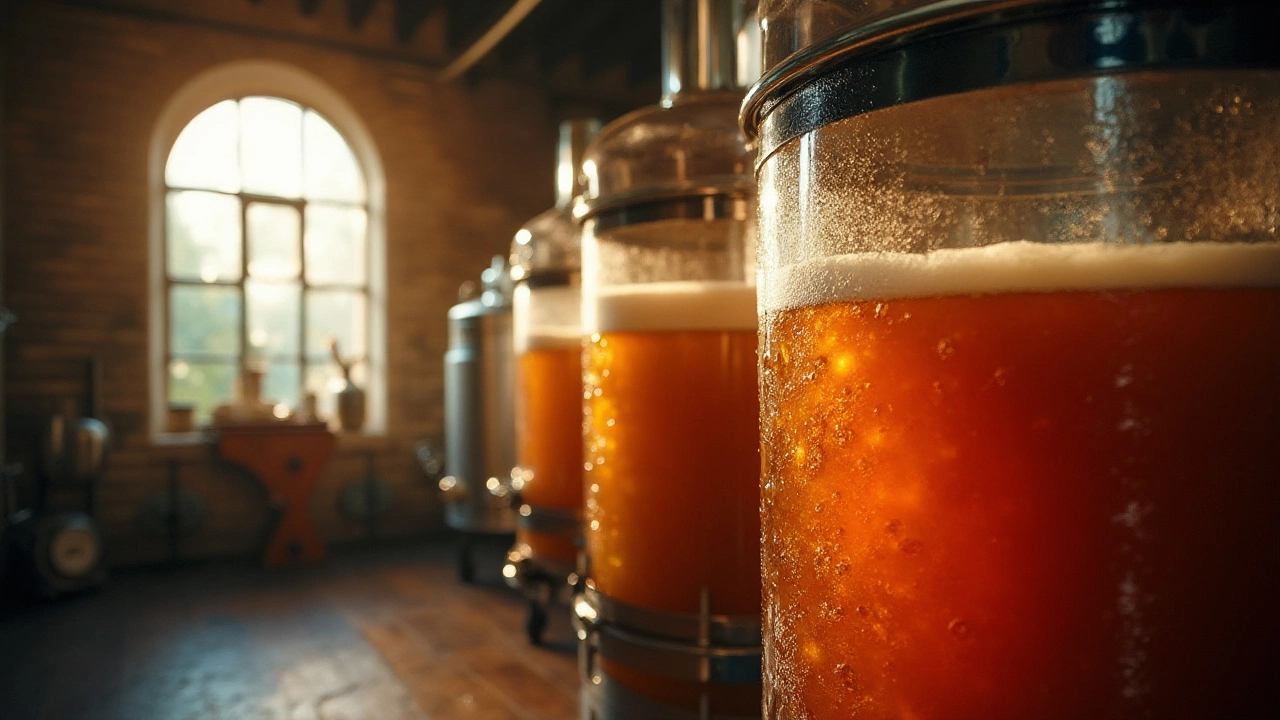
Understanding Fermentation Stages
Fermentation is both an art and a science, marking a pivotal stage in the process of creating your own home brew beer. This stage transforms the sugary liquid mixture, known as wort, into delightful alcohol and complex flavors. At its core, fermentation is about yeast—those miraculous microorganisms that consume sugars and produce alcohol and carbon dioxide. There are various yeast strains, and each offers unique characteristics that can significantly affect the taste and aroma of your brew. This is why choosing the right yeast is akin to selecting the right canvas for a painting, setting the stage for your masterpiece.
The fermentation stage generally consists of several distinct phases: lag phase, active fermentation, and maturation, each of which is crucial. The initial stage, known as the lag phase, is when yeast adapts to the environment, gearing up for action. This period, which can last from a few hours to a couple of days, is deceptive in its quietness, as significant preparation is underway beneath the surface. Once yeast is settled, bubbling madness ensues during active fermentation. This is the heart of the action, typically lasting a week, where aroma compounds flourish. Here, temperature control is essential as too warm or too cold environments can lead to undesirable flavors. A well-known fact among brewers is that slight fluctuations can make a world of difference in the taste of your home brew beer.
The final phase, maturation, is where patience pays off. Although the temptation is to bottle and taste the brew immediately, allowing the beer to settle and mature can lead to more refined flavors. Maturation permits flavors to meld perfectly, achieving harmony. This period can range from one to three weeks, depending on the beer style. It’s during this stage that unwanted compounds, like diacetyl, are reabsorbed, leaving a smoother brew behind. Renowned beer expert John Palmer has stated,
"The hardest thing for homebrewers to learn is patience, but time is everything in fermentation."Indeed, many find that extending the maturation process, albeit painstaking, yields a superior product.
Those diving into the world of home brewing should savor the journey through these fermentation stages, allowing yeast to work its magic at its own pace. With each brewed batch, nuances of time and technique are better understood, impacting outcomes. Equipped with patience and keen observation, brewers find that mastering the fermentation process can unlock a world of flavor, transforming basic wort into liquid gold. Experimentation with different ingredients and processes will elevate a simple drink into a complex, satisfying experience reserved solely for those who appreciate the subtleties of handcrafted beer. Temperature charts and various fermentation vessels can further assist brewers in achieving their desired outcomes, adding another layer of intrigue to this fascinating craft.
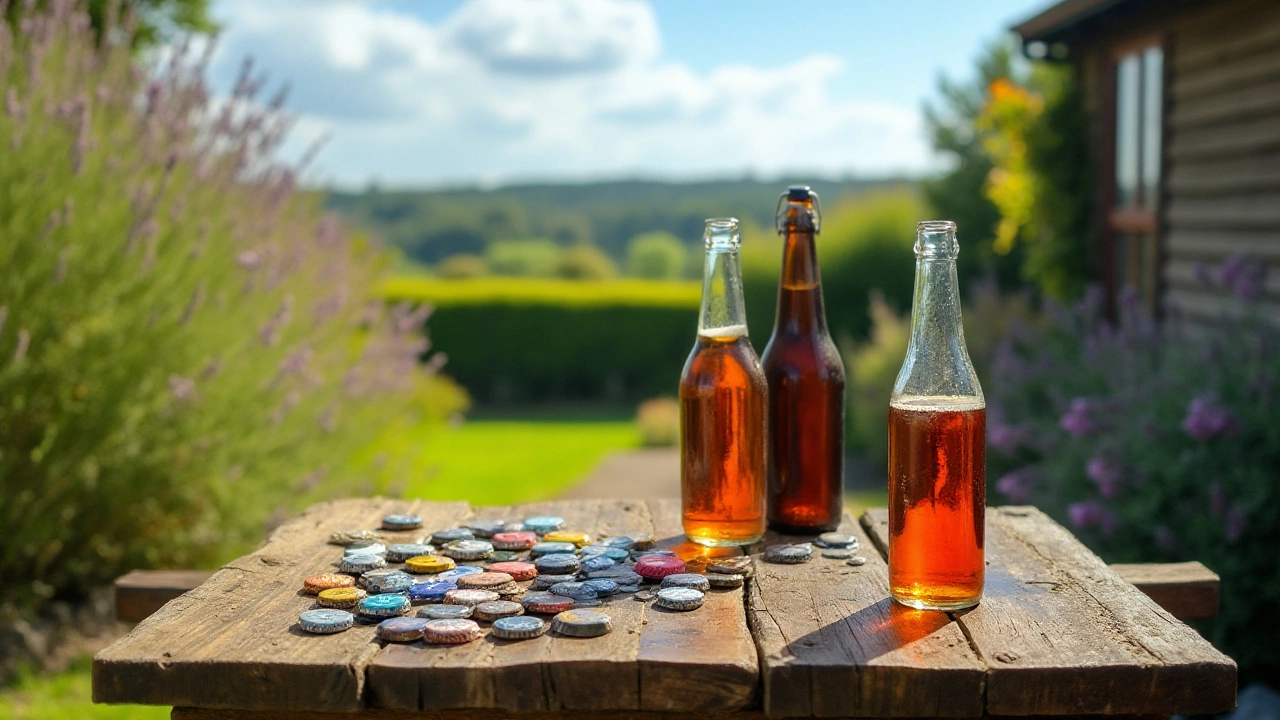
Factors Affecting Flavor Maturation
The journey from grain to glass is a delicate dance of time and chemistry. At the heart of this process lies the question of how flavors mature, a topic that intrigues both seasoned brewers and beginners alike. Fermentation is not merely about changing sugars into alcohol but about creating a symphony of flavors. The maturation process is influenced by several factors, each playing a pivotal role in determining when your home brew beer is ready for that first sip.
One of the key players in this orchestra of flavor is yeast. These microscopic organisms do more than ferment; they shape the taste, aroma, and mouthfeel of your beer. Different strains of yeast contribute varying flavors, from fruity esters to spicy phenols. The choice of yeast can turn a simple wort into a complex brew, making it essential to select one that complements your beer's style. Temperature control is another crucial factor. Maintaining the ideal fermentation temperature ensures that yeast performs optimally, minimizing off-flavors and enhancing desirable notes.
Temperature isn't the sole influencer; time is a silent yet powerful force in the maturation of brewing timeline. It's tempting to crack open a bottle as soon as possible, but rushing can lead to disappointment. Beer requires time to meld flavors and soften harsh notes. Storage conditions also matter; light and oxygen exposure can degrade quality, so keeping your brew in a dark, cool place helps preserve its integrity. Adhering to the right bottling or kegging procedures is equally vital, as improper techniques can introduce unwanted bacteria and spoilage.
There's a saying among brewers: "Patience is bitter, but its fruit is sweet." Balancing hops, malt, and yeast through maturation is akin to letting a fine wine age. Each style of beer has its optimal maturation period. For instance, a light ale may take just a few weeks, while robust stouts or lagers could require several months. If you're uncertain, homebrew forums and brewing logs from fellow enthusiasts can offer valuable insights. As John Palmer, a respected figure in home brewing, famously said, "Brewing is as much about the journey as it is about the destination."
Surprisingly, carbonation, often overlooked in the flavor discussion, plays a significant role. Proper carbonation not only affects the mouthfeel but can bring out different taste profiles. If you're bottling your brew, priming sugar is often added to induce carbonation, but measuring it correctly is crucial to avoid under or over-carbonation. Understanding these factors will not only guide you in predicting the right time to drink your beer but also enhance your brewing skills, leading to better batches as you experiment and learn.
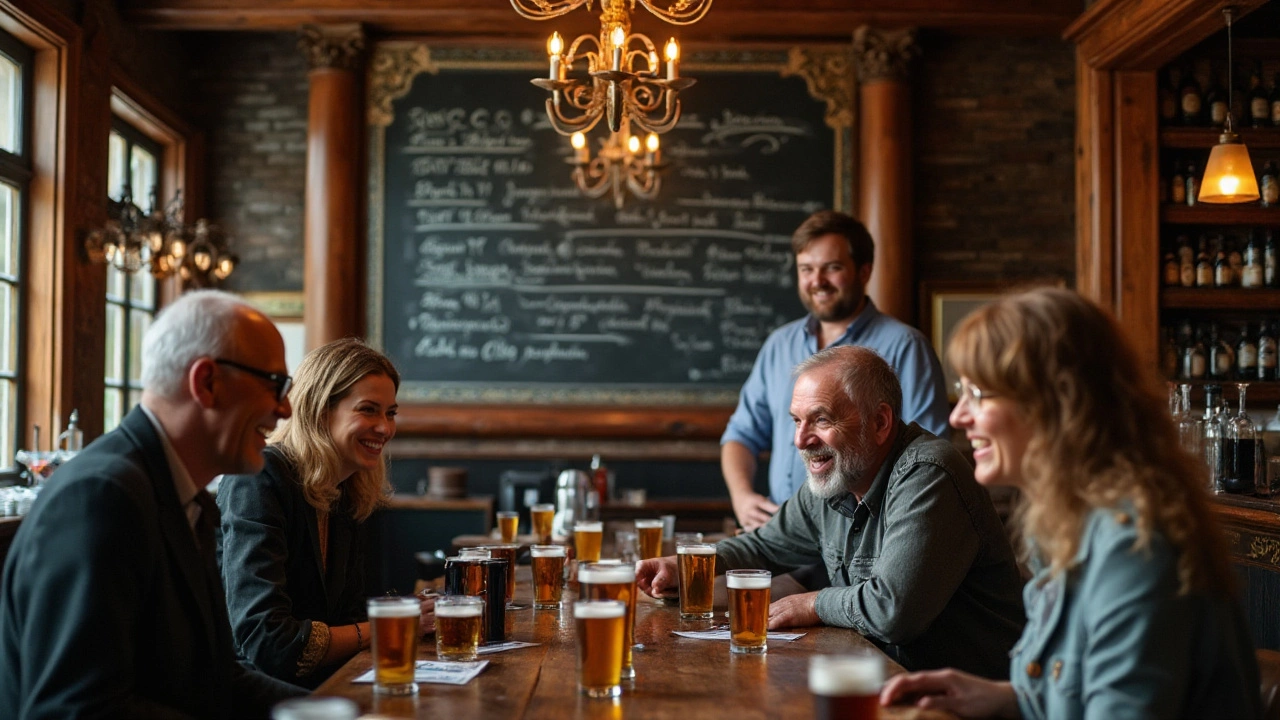
Tips for Enjoying Your First Sip
Diving into your creation and savoring your first sip of home brew beer is an experience no home brewer forgets. Yet, ensuring this moment is as enjoyable as it should be requires some crucial tips and tricks. First and foremost, let your beer settle and condition in the bottle for a while before opening. Typically, after bottling, it’s recommended to let your brew sit for at least two weeks. This extra time allows carbonation to develop, which is essential for texture and mouthfeel, often leading to an improved taste that makes all the difference.
When ready, chill your beer thoroughly. A common mistake new brewers make is not cooling their beer enough. Storing your bottles in a fridge for at least 24 hours before popping the cap can help reduce excessive foaming and improve the beer's clarity. It's important to note that different beer styles have their ideal serving temperatures. While ales might benefit from being served slightly warmer, lagers often need cooler serving temps to bring out their crisp characteristics. Imagine this as tender loving care for your brew, giving it the best stage possible for showtime.
Serving with Style
Pour your beer gently to retain its aroma and taste. Start pouring at a 45-degree angle and gradually tilt it upright as the glass fills. This technique helps maintain a good head on your beer, releasing its fragrant, aromatic compounds which can significantly enhance the drinking experience. Invest in beer glasses suited to the style of beer you’ve brewed. Glassware is more than just aesthetics. Each style can accentuate different aspects of the beer, from aroma to taste to visual appeal. Whether it's a pint glass or a tulip glass, choosing the right vessel can elevate your experience from ordinary to extraordinary.
Most importantly, share your creation. Nothing enhances the joy of drinking beer more than sharing it with friends or family. They bring different palates and perspectives, adding another layer of feedback that can enhance your future brewing efforts. In the words of seasoned brewer Charlie Papazian,
"Relax, don't worry, and have a homebrew."There's wisdom there that goes beyond just brewing—it's about enjoying the process and the product equally.
